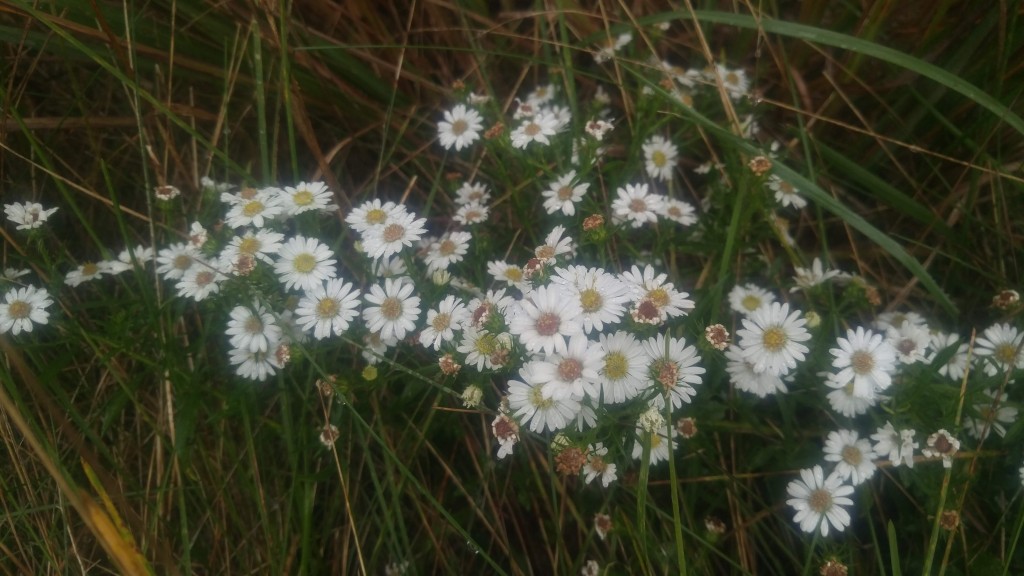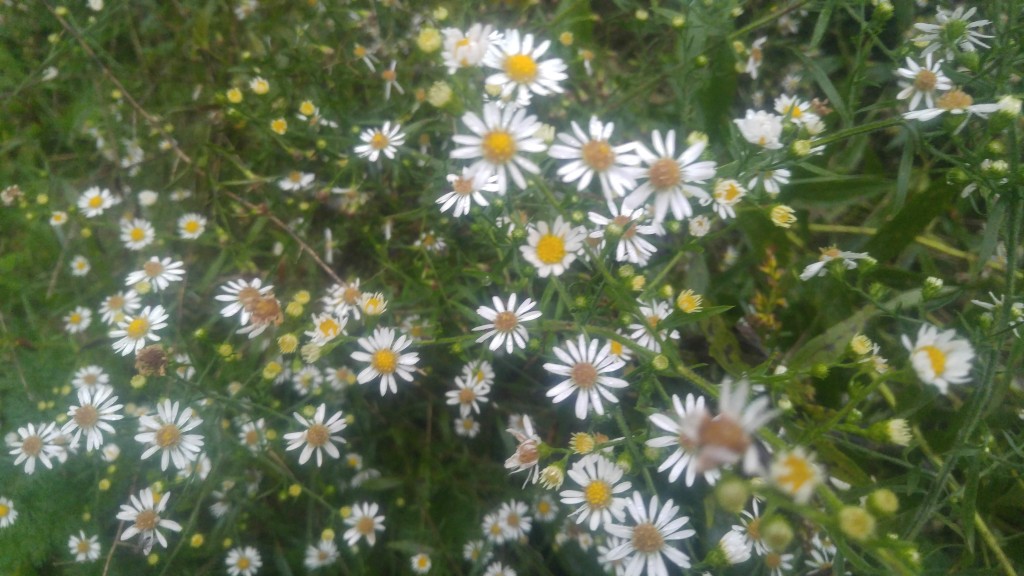A fall flowering favorite of mine is our native calico aster. It is found in all eastern US states and Canadian provinces.
Around our local area, I’m seeing more of these plants than usual. The relatively rainy growing season may have something to do with it since they prefer semi-damp environments. More frequent rain means that it will be more likely they will be able to establish themselves in spots where they wouldn’t be found in drier years.
In late summer and early fall, these asters produce a display of 5/8-inch diameter, white flowers with pale yellow centers. You often find them along hiking trails, roadsides and the edge of fields. In my yard they’re popping up around my wood chip pile, an old compost heap and other places that don’t get touched by the mower that often. They range in height from about a foot to over five feet tall depending on their location and how long they have been growing there. They are perennials.
Even though they are not known for their scent, I sometimes can detect a faint sweet smell from mine if I put my nose right up against the flowers.
Calico asters are a good source of late season nectar for pollinators. I’ve noticed many honeybees and other small pollinating insects on mine. As the season progresses, the flower centers change colors as they age adding hues of pink, blue or maroon here and there, giving it a “calico” appearance.
Calico asters can be confused with other similar-looking species. However, if you look closely, you’ll notice the plant has another distinguishing characteristic, its flowers grow from only one side of the stems.
Mammals such as deer and rabbits sometimes browse on the foliage. Some species of butterflies and moths do too.
The stems are strong enough to stay standing through much of the winter adding interesting contrast to otherwise empty expanses of white snow.
These likable flowers make a great addition to a wildflower garden. Plant breeders have worked with them and have come up with improved varieties that are more tame and will look at home in your main flower garden.
Bob

